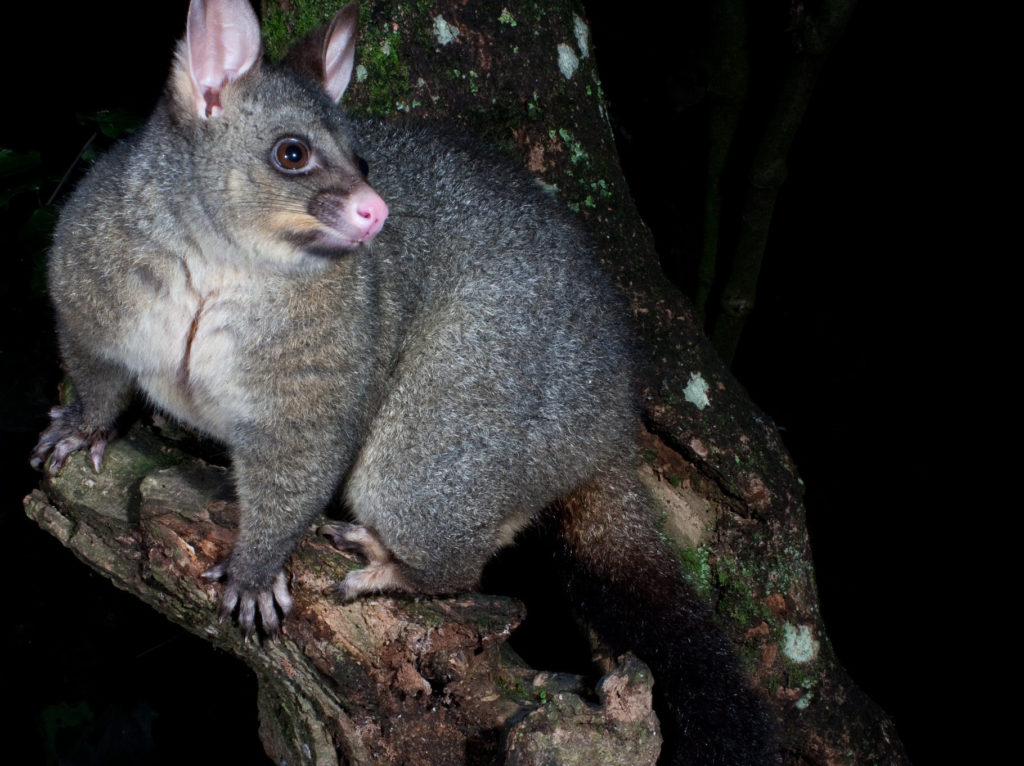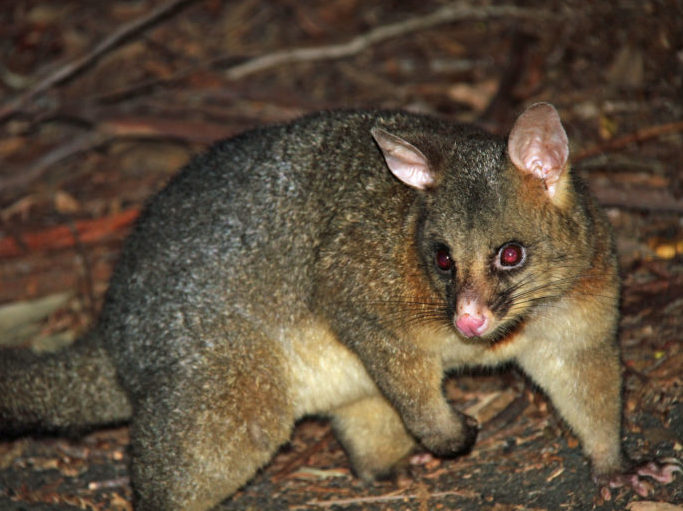Possums are a huge problem in New Zealand – and consequently the subject of a great deal of research. Most of that research, understandably, focuses on the forests and forest remnants where they are most commonly found.
But what about those urban possums, patrolling the rooftops at night, raiding fruit trees and decimating roses?

A recent study by researchers from University of Otago’s Zoology and Botany departments looked at brushtail possums in an urban environment and the degree to which they depended on forest remnants to survive in the city. As successful urban adaptors, the researchers hypothesised that possums might be occupying a wider range of habitats. They used ‘site occupancy methods’ to check out where possums were spending their summer months.

Data was collected on the presence or absence of possums and key habitat characteristics at 150 survey locations. The researchers also looked at the availability of forest fragments at the locations and what possible sources of supplementary food were present such as fruit trees, vegetable gardens and compost heaps.
Not surprisingly, possum occupancy rates were highest in urban forest fragments. Possums were, however, also present across a large proportion of residential habitats. Increased housing density/decreased green cover led to a corresponding decrease in possum numbers and the presence of supplementary food sources was found to be significant in determining whether possums occupied a particular site. The researchers postulated that this may reflect the high nutritional value of these food types.
Possum occupancy decreased as the proportion of forest fragment decreased. Thus the forest remnants in our cities are important in determining possum distribution. The researchers conclude that: “Control operations to protect native birds from possum predation in cities should include well-vegetated residential areas; these modified habitats not only support possums but provide a source for reinvasion of fragments.”
The full article can be downloaded for free at: Predicting Summer Site Occupancy for an Invasive Species, the Common Brushtail Possum (Trichosurus vulpecula), in an Urban Environment (2013)
When removing possums from an area – be it forest or urban forest remnant – is it better to keep that area free from invading immigrant possums by perimeter control or by maintenance within the possum-free area itself? A study by D.R. Morgan, G. Nugent and B. Warburton from Landcare Research, Lincoln compared the cost-effectiveness of four control strategies over a 60-year period by constructing a ‘deterministic bioeconomic model’. This model was based on 23 variables describing population characteristics, sizes of the sink (i.e. area controlled) and source (area of reinfestation), and costs
Cost and effectiveness of control were found to be the most influential variables in determining whether an area remained possum-free after all possums had been removed. Factors describing various immigration scenarios after control had relatively little influence.
When cost and effectiveness factors were varied, the long-term model predicted “that local elimination of possums followed by ‘perimeter’ control is likely to be a more cost-effective control strategy under most scenarios than the current ‘knockdown-then-maintenance-control’ approach.”
The full article is available for purchase from the publisher: Benefits and feasibility of local elimination of possum populations (2006)
Finally, what should you do if a possum hitches a boat-ride to your previously possum-free island? The scale – and consequent expense – of response depends on whether it is a single possum or a posse of pests. If it’s a single incursion, then the risks to the island’s possum-free status vary hugely depending on whether the invader is a lone male or a lone female, possibly pregnant or carrying a baby in her pouch. A lone male will eventually die. A female with young can ultimately continue breeding.
This was essentially the question posed to researchers Ana Ramón-Laca (Landcare Research, Auckland) and Dianne Gleeson (Institute for Applied Ecology, University of Canberra) when some hair and faecal remains, suspected to be from a possum or possums, were found on a vehicle transport barge in port at Great Barrier Island in the Hauraki Gulf.
What followed was a science-based thriller in possum forensic genetics as the researchers rushed to determine the number of possums, their sex and whether they had disembarked at Great Barrier. The article can be downloaded for free from the New Zealand Journal of Ecology – so it would be a shame to give away the ending here.

